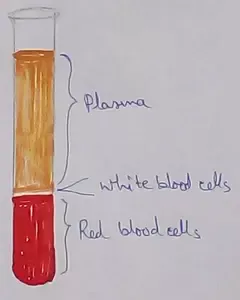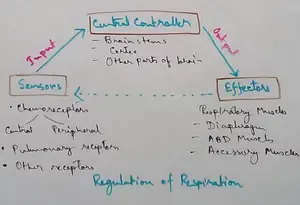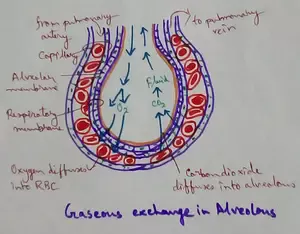Explain Digestion of Food
Before the digestion is start by the different enzymes secreted from the different digestive glands food must be turned and chut or mixed with saliva inside the mouth. song is a muscular organ which helps to masticate the food with saliva and testing and the speaking. On the other hand human contains four types of teeth, incisors canines premolars and molars. Incisors are associated with cutting and biting the food, canines for tearing, premolar is associated for grinding and crushing on the other hand molar is also associated for grinding and crushing, the food.
Salivary Glands - Salivary glands are present inside the mouth which secrete saliva as it is a colourless and slimmer fluid that was the food and convert it into Bolus that further is transported via oesophagus.
Functions of saliva- it moistened and lubricates the food ,salivary amylase present in saliva that partially converts starch into maltose. the enzymes that present in the saliva is lysozyme which kills the invading bacteria that comes from outside.
Oesophagus - Oesophagus is a long muscular tube that helps in the movement of food into the stomach by peristaltic movement.
Functions of oesophagus- oesophagus is the long tube which push the food along the pipe into the stomach by peristaltic movement.
Stomach- stomach is about like muscular organ and these gastric glands of stomach secrete gastric juices contain enzymes rennin in pepsin and hydrochloric acid is secreted from the stomach. Pepsin are secreted from the peptic cell that found in the stomach and hydrochloric acid Secret it from the oxyntic cell of the stomach. Hydrochloric acid convert the wolas into acidic medium because pepsin cannot work without acidic PH. Then pepsin acts on the food and convert it into a creamy fluid called kind due to its continuous chanting by muscular activity of stomach. Raining is another type of inside which converts milk protein into casein and other proteins in two proteases and peptones. Mucus is also secreted from the stoma which lubricate the food and also neutralize the excess hydrochloric acid secretion or its effect.
Pancreas - Pancreas is a digestive gland which is a mixed gland because it contains both exocrine and endocrine function. From the exocrine part of the stomach pain creative juices are produced feet convert protein Carbohydrate and fat into more simple form. Pancreatic juices contain intero kindness that converts inactive trypsinogen into trypsin and undigested starch into maltose or it emulsified fat into fatty acids and glycerol. Pancreatic juices required alkaline pH for their activity does the food must be converted to alkaline medium for the enzyme activity. Endocrine part of the pancreas contain insulin glucagon hormone which are responsible for maintaining the proper balance of sugar in the blood.
Liver - Liver is the largest gland in the body but it itself does not contain any digestive juice. ES file please produces from the liver which is stored in the gallbladder that component act as the major digestive chemical specially for digestion of fat. wine contain different pigments. Balvin Willy Hardy and it helps to break down of fats into tiny droplets which called emulsification of fat and it helps in the digestion of fat.
There is also presence of sodium taurocholate and sodium glycocholate component that is the major thing for the emulsification of fat and this is transported by the common hepatic duct to the liver and help in metabolism. Major functions of liver and metabolism of glucose, deamination,means synthesis of Urea and sugar and the formation of RBCs in foetus.
Small Intestine - Small intestine is the next step after pancreas where food goes. This organ helps in digestion and absorption of digested food as it contains a lined of finger like structure or projections which is called villi and it help in absorption by increasing surface area for absorption. Small intestine can be divided into three parts that is deudenum, jejunum and ileum. Intestinal juices are produces from the duodenum part of the small intestine and they contain carbohydrate digestive enzymes fat digestive enzymes and protein digestive enzymes. Intestinal juices contain maltase which convert maltose to simple carbohydrate called Glucose. Sucrose is another type of enzymes found in intestinal juices that acts on sucrose to convert it into glucose and fructose. Life is is also secreted from the intestinal cavity which is associated with the fat digestion and responsible for the formation of fatty acid and glycerol. Peptide is present in intestinal juice convert peptides into amino acid Residue. Lactose is another type of enzyme that acts on lactose and convert it into glucose and galactose.
Large intestine - Large intestine is the next part of the small intestine when no digestion takes place and only absorption of water and removal of undigested food occurs in this part.
Absorption of food and water - Food is observed in the small intestine where as a minus it’s simple sugars like glucose, fructose monosaccharides minerals, vitamins are absorbed through the villi when it reach the blood capillaries and finally enters into the blood circulation which is again distributed to the whole body. Fatty acids and glycerol are absorbed into the lacteal or an impressive in order to the lymphatic system.
Absorption of water is observed in large intestine and undigested food call faeces are stored in the rectum.
Assimilation of Food - Assimilation of food is the process of conversion of absorb food in two substances which is required by the body.
Importance of food digestion- Different simple components of carbohydrate fat and protein are produced during digestion of food and these components are used in different purpose within our body. Glucose is used as the substrate for respiration and excess glucose convert into polysaccharide call glycogen that stored in the liver for future use. Amino acids are used for the synthesis of protein and different proteins are associated to form hormone enzymes biomolecules etc. Fatty acid molecules are produced during fat metabolism and eat stored in the adipose tissue which is used for the formation of cell membrane.
From Explain Digestion of Food to HOME PAGE
Recent Articles
-
What Is Plasma? | Blood Plasma | Proteins | Nutrients | Cholesterol
Nov 07, 25 10:29 AM
Blood is a mobile fluid which is a connective tissue and is derived from the mesoderm like cell any other connective tissue. Colour of blood is reddish and that flows inside the blood vessels by means… -
Disorders of Respiratory System | Tuberculosis | Pleurisy | Emphysema
Oct 28, 25 11:39 PM
Tuberculosis is very common disease and is caused by a type of bacteria called Mycobacterium tuberculosis. This disease causes different trouble in the respiration and infection of several parts of th… -
Regulation of Respiration | Respiratory Centres | Inspiratory Area |
Oct 14, 25 12:13 AM
Respiratory Centre is the area that controls the rate of respiration and it is observed to be located in medulla oblongata and pons. Respiratory Centre has the following will dispersed components like… -
Explain Transport of Gases | External Respiration | Tissue Respiration
Oct 09, 25 11:35 PM
In humans gaseous exchange is completed in the following ways the steps are - External Respiration or Breathing - Breathing in false taking in of Oxygen and giving out of carbon dioxide in the body. M… -
Kind and Number of Teeth | Location of Teeth in Mouth | Care of Teeth
Sep 11, 25 12:52 AM
Kind and Number of Teeth









New! Comments
Have your say about what you just read! Leave me a comment in the box below.